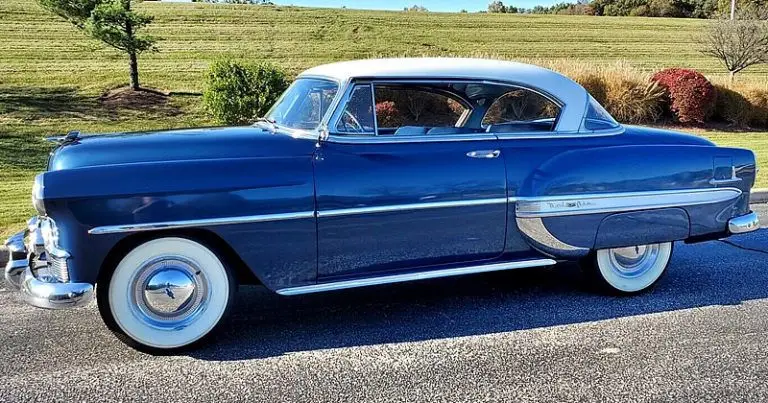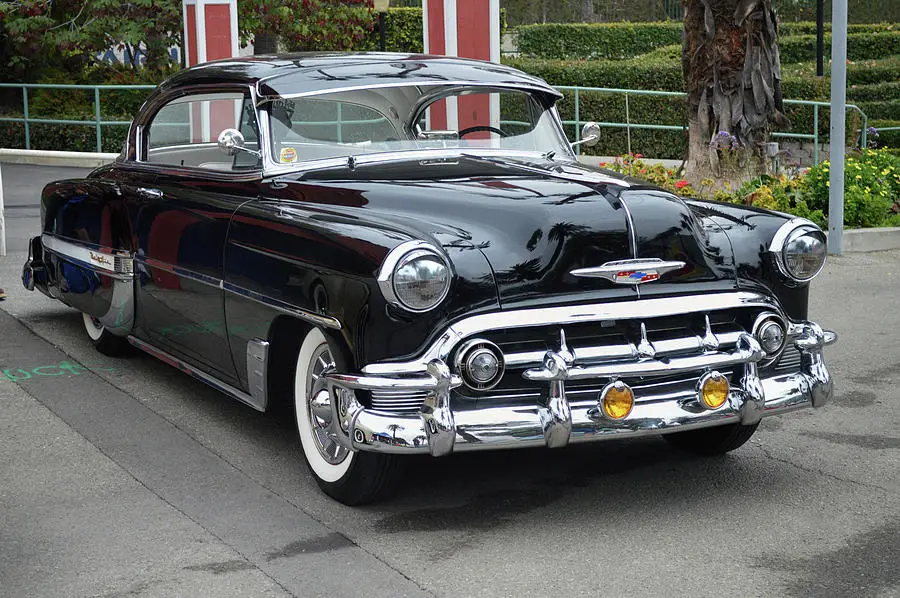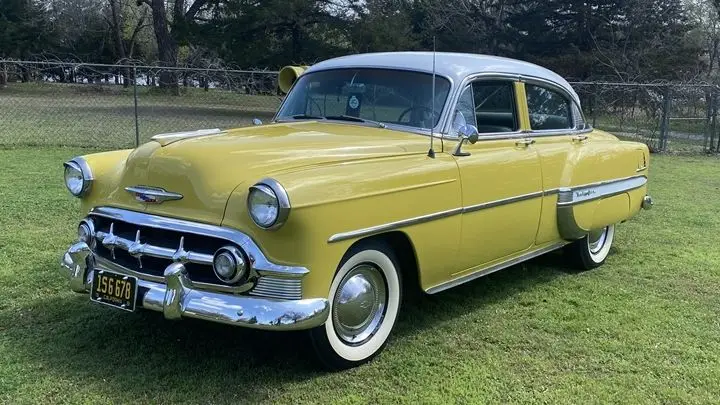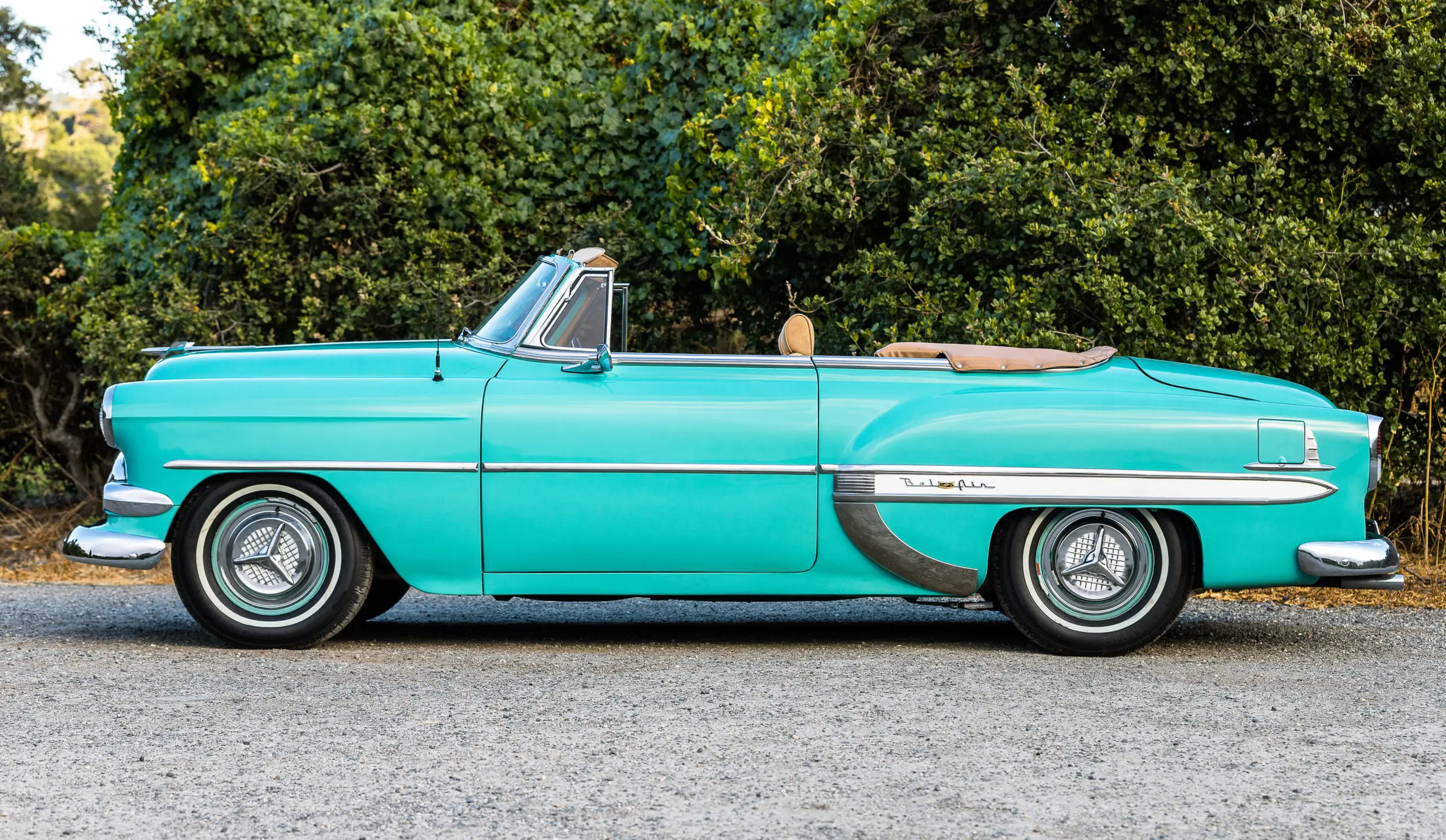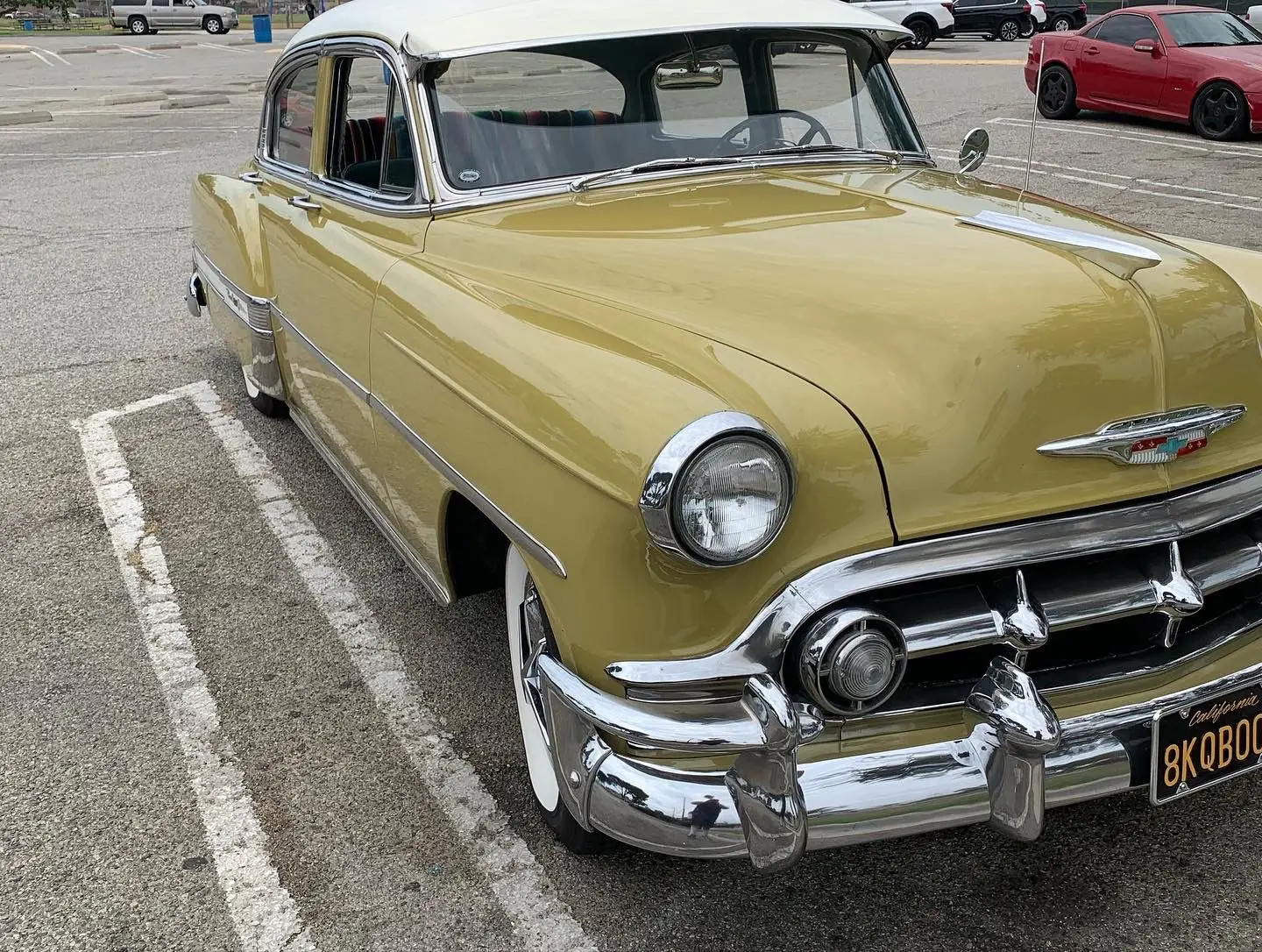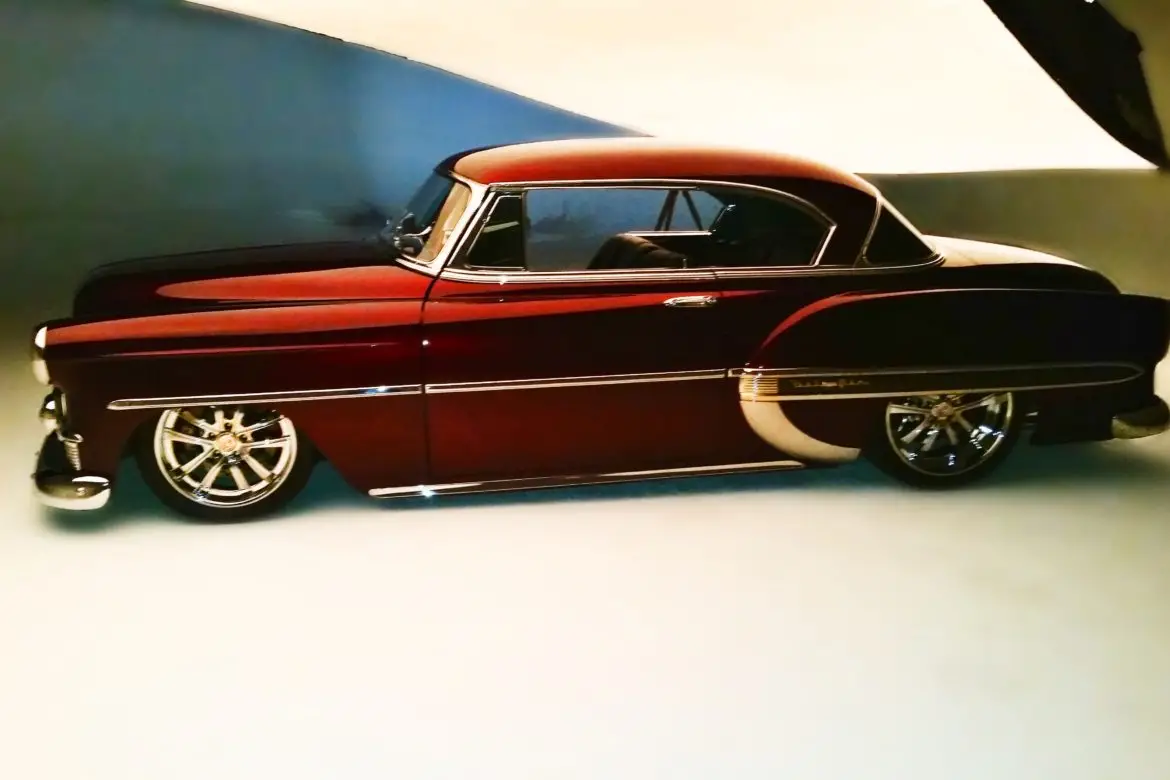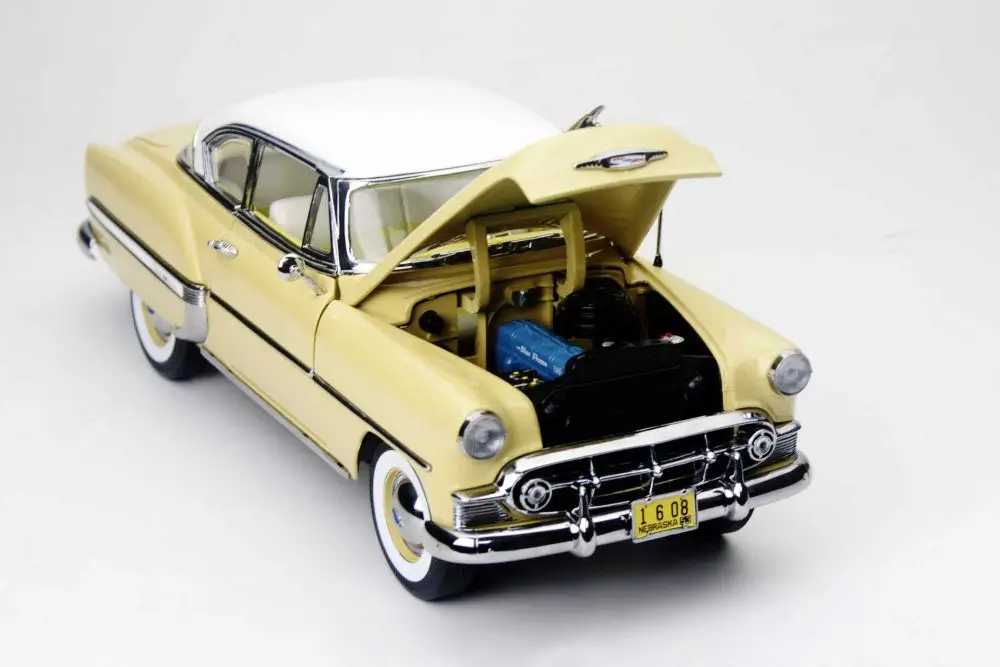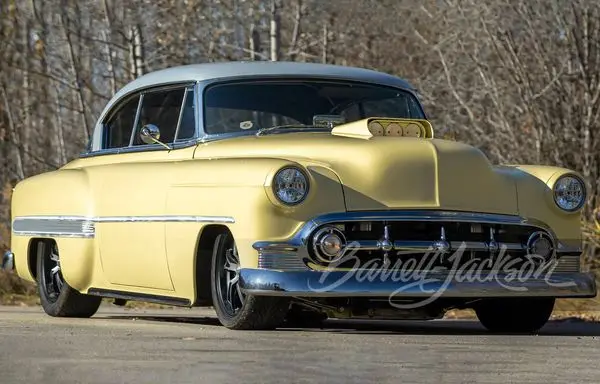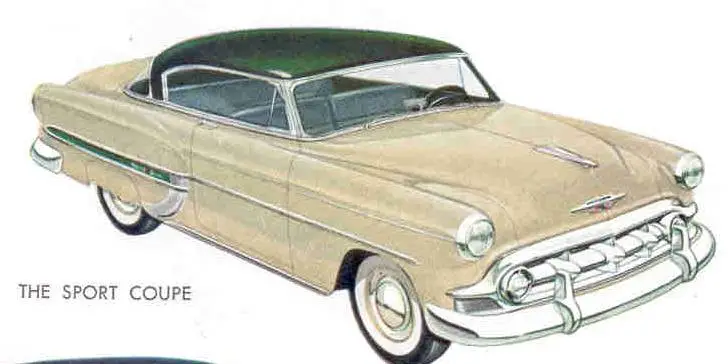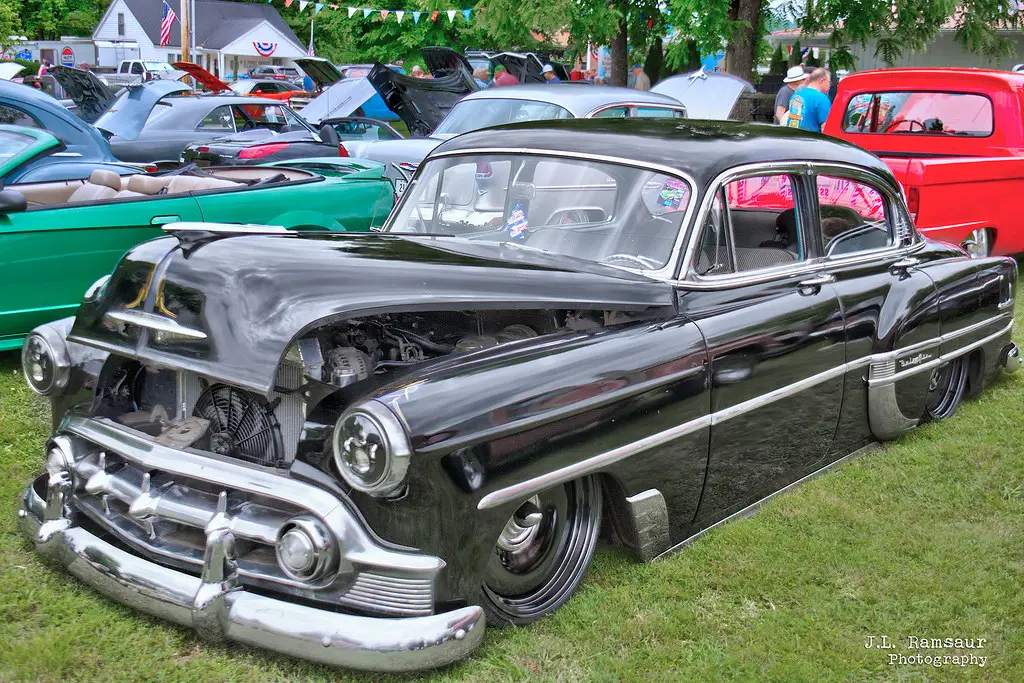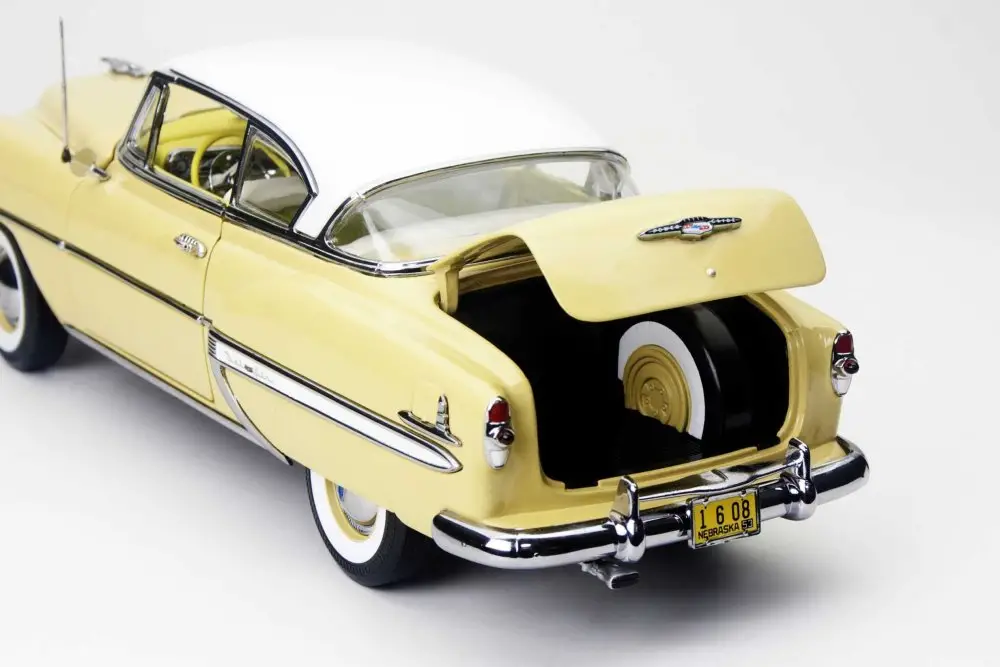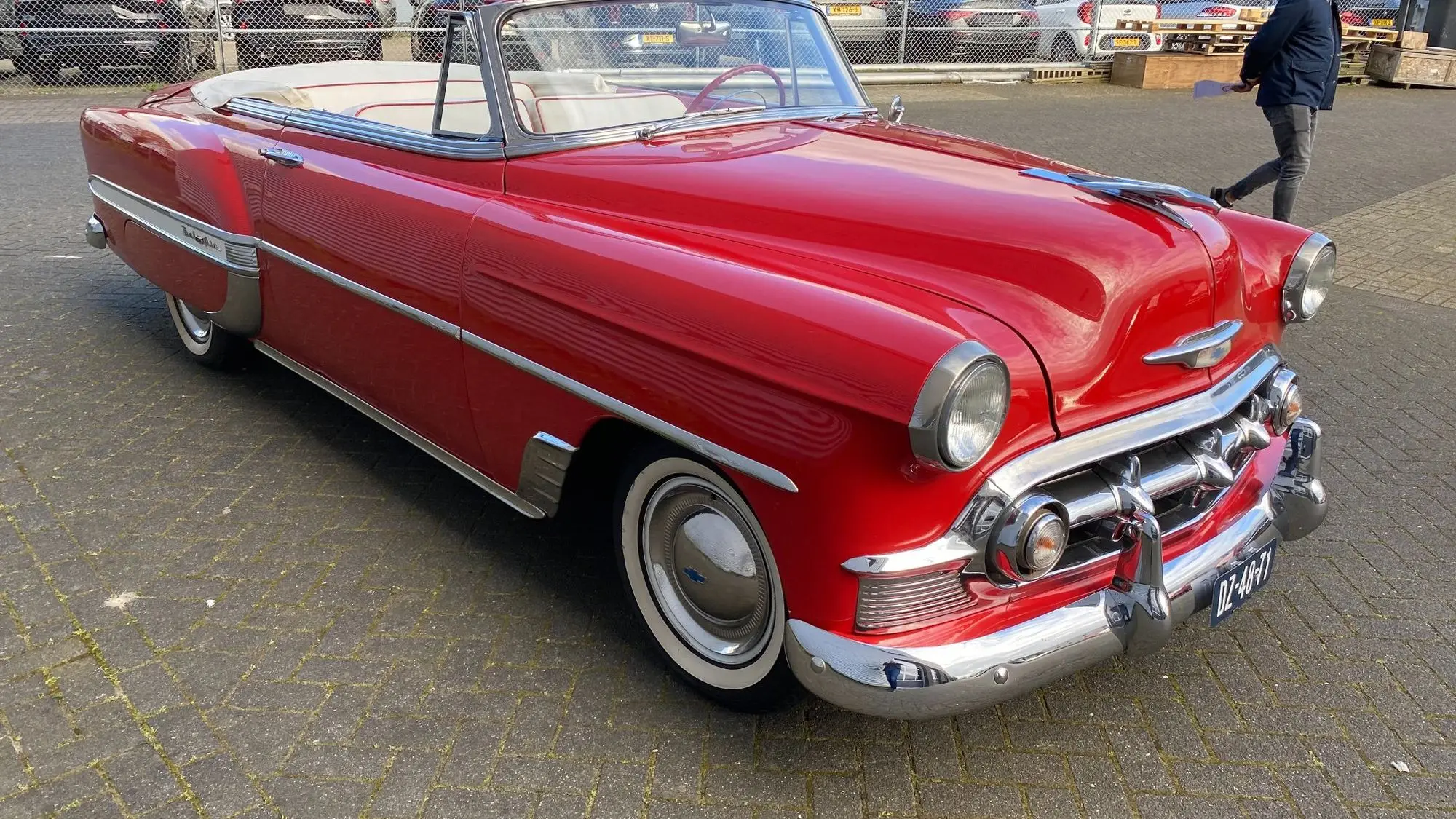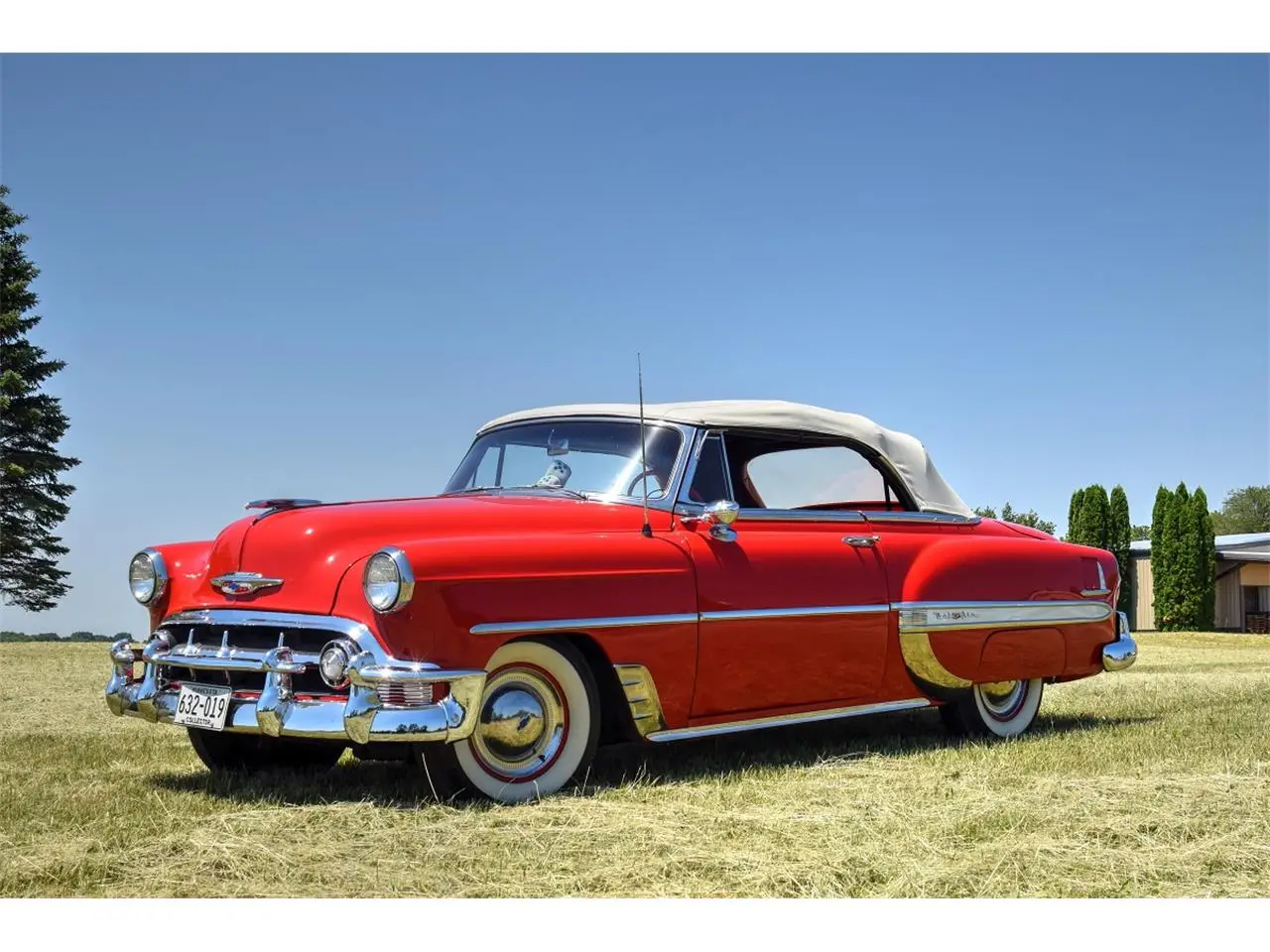1953 Chevy Bel Air A Classic American Beauty
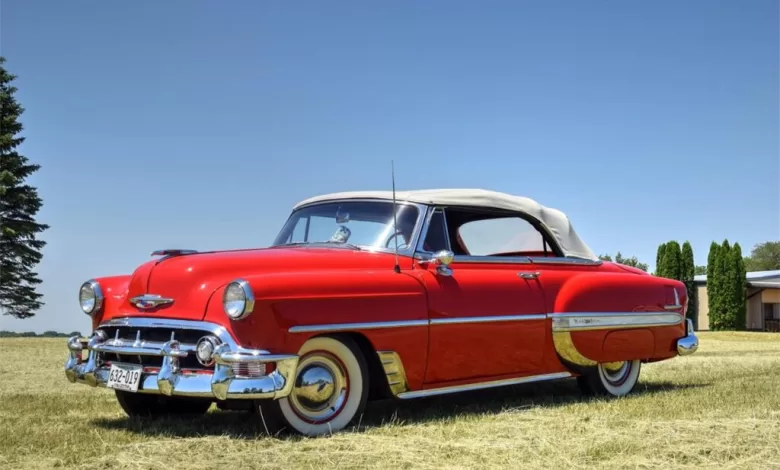
The 1953 Chevrolet Bel Air was a groundbreaking car that ushered in a new era of automotive design and performance. It was the first Chevrolet to offer a curved one-piece windshield, and it featured a host of other styling innovations, including a wide chrome strip that ran from the rear fender bulge to the rear bumper. The Bel Air was also available with a new Powerglide automatic transmission, which made it even more appealing to consumers.
History of the 1953 Chevy Bel Air
The 1953 Bel Air was offered in a variety of body styles, including a two-door hardtop, a two-door convertible, a four-door sedan, and a four-door station wagon. It was powered by a 235.5-cubic-inch inline-six engine that produced 105 horsepower with a manual transmission or 115 horsepower with the Powerglide automatic transmission.
The 1953 Bel Air was a huge success for Chevrolet, and it helped to solidify the company’s position as the leading automaker in the United States. The Bel Air remained in production for over two decades, and it is still considered to be one of the most iconic American cars of all time.
Here are some of the key features of the 1953 Chevrolet Bel Air:
- Curved one-piece windshield
- Wide chrome strip that ran from the rear fender bulge to the rear bumper
- New Powerglide automatic transmission
- 235.5-cubic-inch inline-six engine
- Available in a variety of body styles, including a two-door hardtop, a two-door convertible, a four-door sedan, and a four-door station wagon
The 1953 Chevrolet Bel Air was a true American classic, and it is still cherished by car enthusiasts today.
Debut of the 1953 Chevy Bel Air
The 1953 Chevy Bel Air made its debut in late 1952, featuring a new one-piece curved windshield, a redesigned grille, and a longer wheelbase. It also had a lower hood and fender line, giving it a sleeker and more modern appearance. The Bel Air was available in three body styles: a two-door hardtop, a four-door sedan, and a convertible. The interior of the car was also revamped, with updated upholstery, a new dash design, and a three-spoke steering wheel.
The Iconic Blue Flame Engine
One of the most notable features of the 1953 Bel Air was its new engine – the Blue Flame straight-six. This engine produced 115 horsepower and was considered advanced for its time. It had a revolutionary hydraulic valve system that reduced maintenance costs and improved performance. The engine was also known for its reliability, making it a popular choice among car enthusiasts.
Special Editions of the 1953 Chevy Bel Air
To commemorate Chevrolet’s 50th anniversary in 1953, a special edition Bel Air was released. It came with a gold-colored grille, fender trim, and interior accents, along with commemorative emblems on the front fenders. Only 300 of these special edition Bel Airs were produced, making them highly sought after by collectors today.
Features and Specs of the 1953 Chevy Bel Air
The 1953 Chevy Bel Air was ahead of its time in terms of design, performance, and features. Let’s take a look at some of its notable specifications:
- Body style: Two-door hardtop, four-door sedan, convertible
- Engine: Blue Flame straight-six with a displacement of 235.5 cubic inches
- Horsepower: 115 hp
- Transmission: Three-speed manual or Powerglide two-speed automatic
- Wheelbase: 115 inches
- Length: 197.9 inches
- Width: 71.75 inches
- Weight: 3,100-3,400 lbs
- Top speed: 90 mph
- Fuel economy: 18 mpg
The 1953 Bel Air also had various optional features such as power steering, power brakes, and electric windshield wipers. However, even without these modern conveniences, the Bel Air was still a top-performing car of its time.
Notable Design Features of the 1953 Chevy Bel Air
The 1953 Bel Air was known for its timeless design and distinctive features that set it apart from other cars of its era. Some of these design elements include:
Classic Body Style
The Bel Air’s body style was bold, elegant, and eye-catching. Its sleek lines, chrome trimmings, and iconic tail fins were all trademarks of the golden age of American automobiles. The Bel Air also had a longer wheelbase and a lower hood and fender line than previous models, giving it a more modern and refined look.
Two-Tone Paint Schemes
One of the most recognizable design aspects of the 1953 Chevy Bel Air was its two-tone paint schemes. These paint combinations featured a primary color on the top half of the car and a secondary color on the bottom half. The color options were endless, and it gave car owners the opportunity to customize their Bel Air to their liking.
Luxurious Interior
The interior of the 1953 Bel Air was equally as impressive as its exterior. It featured updated upholstery, a new dash design, and a three-spoke steering wheel. The car also had ample legroom and plenty of headroom, making it comfortable for both the driver and passengers.
Original Prices of the 1953 Chevy Bel Air
In 1953, the Bel Air was considered a luxury car, with a starting price of $2,175 for the two-door hardtop model. The four-door sedan was priced at $1,923, while the convertible was the most expensive option at $2,448. These prices were considerably higher than other cars of the time, making the Bel Air a symbol of wealth and prestige.
Inflation-Adjusted Prices
In today’s market, the original prices of the 1953 Chevy Bel Air may seem relatively low. However, when adjusted for inflation, the prices equate to approximately $20,700 for the two-door hardtop, $18,400 for the four-door sedan, and $23,500 for the convertible. These prices are still quite reasonable compared to other classic cars of similar value.
Famous Owners of the 1953 Chevy Bel Air
Over the years, the 1953 Bel Air has been owned by various celebrities, car enthusiasts, and even political figures. Some notable owners include:
- Elvis Presley: The “King of Rock and Roll” was known for his love of cars, and he owned a 1953 Chevy Bel Air, among many others.
- Frank Sinatra: The legendary singer and actor was also a proud owner of a 1953 Bel Air.
- Marilyn Monroe: The iconic actress was gifted a pink 1953 Bel Air by her husband, Joe DiMaggio.
- John F. Kennedy: Before becoming President, JFK owned a 1953 Bel Air convertible.
- James Dean: The beloved actor and cultural icon owned a custom 1953 Bel Air that was featured in the movie “Rebel Without a Cause.”
Restoration Tips for the 1953 Chevy Bel Air
For many car enthusiasts, owning a 1953 Bel Air is a dream come true. However, finding one in pristine condition can be a challenge. If you are lucky enough to own or acquire a 1953 Bel Air, here are some restoration tips to help bring it back to its former glory:
Start with the Basics
Before diving into any major restoration projects, it’s essential to start with basic maintenance by checking the car’s fluids, brakes, and tires. This will give you a good idea of what needs immediate attention and what can wait.
Address Any Rust Issues
Rust is a common problem with older vehicles, and the 1953 Bel Air is no exception. It’s crucial to identify and address any rust issues early on to prevent further damage. Sanding, patching, and repainting are some of the ways to tackle rust on a car.
Research and Source Authentic Parts
Finding authentic parts for a 1953 Bel Air can be a daunting task. It’s essential to do your research and find reputable sources for original or high-quality reproduction parts. This will ensure that your car maintains its authenticity and value.
Common Issues with the 1953 Chevy Bel Air
As with any vintage car, there are bound to be some common problems that owners may encounter with their 1953 Bel Airs. Here are a few of the most frequent issues:
Electrical Problems
The 1953 Bel Air is known for its wiring issues, mainly due to the age and condition of the original wiring. It’s not uncommon for owners to have to replace or repair the electrical system to keep the car running smoothly.
Braking Issues
The original drum brakes on the 1953 Bel Air may not be as efficient as modern disc brakes. Owners may experience longer stopping distances and brake fade, which can be dangerous. Upgrading to disc brakes or regular maintenance on the drum brakes can help alleviate these issues.
Cooling System Problems
The cooling system in the 1953 Bel Air was not as advanced as modern cars, and it may struggle to keep the engine cool in hot weather or heavy traffic. Regular maintenance and upgrades such as a larger radiator or electric fan can help improve the cooling system’s efficiency.
Collector’s Value of the 1953 Chevy Bel Air
The 1953 Bel Air is considered one of the most collectible cars of all time, with an estimated 1.5 million still in existence today. Its timeless design, iconic features, and limited production numbers make it highly sought after by collectors worldwide.
Rising Values of the 1953 Bel Air
In recent years, the value of the 1953 Bel Air has been on the rise. According to Hagerty, a leading classic car valuation and insurance company, the average value of a 1953 Bel Air in good condition was $29,800 in 2015. In 2021, that same car in similar condition is valued at $40,300, representing a significant increase in just six years.
Factors Affecting the Value
Several factors can affect the value of a 1953 Bel Air, including its condition, rarity, originality, and famous ownership history. Cars in excellent condition with all their original parts and accessories will have a higher value than those that have been modified or restored with non-authentic parts.
Comparison between the 1953 Chevy Bel Air and Other Models
The 1953 Chevy Bel Air is often compared to other cars from the same era, such as the 1953 Ford Crestline and the 1953 Cadillac Series 62. Let’s take a look at how these models stack up against each other:
1953 Chevy Bel Air vs. 1953 Ford Crestline
Both the 1953 Chevy Bel Air and the 1953 Ford Crestline were popular models during their time, but they had some notable differences. The Bel Air had a more modern design, with its one-piece curved windshield and sleek tail fins, while the Crestline had a more traditional boxy body style. The Bel Air also had a more powerful engine and better fuel economy compared to the Crestline.
1953 Chevy Bel Air vs. 1953 Cadillac Series 62
The 1953 Cadillac Series 62 was a luxury car that competed with the Bel Air for the top spot among American cars. The Cadillac had a more upscale interior, a larger engine, and more advanced features such as power windows and seats. However, it was also much more expensive than the Bel Air, making it less accessible to the average car buyer.
Memorable Events Involving the 1953 Chevy Bel Air
Over the years, the 1953 Bel Air has made appearances in various events and pop culture references. Here are a few notable mentions:
“American Graffiti”
The iconic movie “American Graffiti” featured a yellow 1953 Bel Air as one of its main characters’ cars. The movie was a tribute to the American car culture of the 1950s and helped solidify the Bel Air’s status as a classic car.
Hot Rod Magazine’s First Cover Car
The first issue of Hot Rod magazine in January 1948 featured a 1932 Ford roadster on its cover. However, in 1953, the magazine shifted its focus to custom and hot rod cars, featuring a customized 1953 Chevy Bel Air on its cover.
NASCAR Championship Winner
In 1953, Herb Thomas won the NASCAR Grand National Series Championship driving a 1953 Chevy Bel Air, making it the first time a Chevrolet won the title since 1950.
Modern Upgrades for the 1953 Chevy Bel Air
While many collectors prefer to keep their 1953 Bel Airs as original as possible, some modern upgrades can enhance the car’s performance and safety without taking away from its authenticity. Some popular upgrades include:
- Disc brakes: As mentioned earlier, upgrading to disc brakes can significantly improve the Bel Air’s braking ability.
- Electronic ignition: Replacing the old points and condenser ignition system with an electronic system can improve the car’s starting and running capabilities.
- Upgraded suspension: Adding aftermarket suspension components can increase the Bel Air’s handling and ride quality.
- Fuel injection: Swapping the original carburetor for a fuel injection system can improve fuel efficiency and engine performance.
Conclusion
The 1953 Chevy Bel Air has proven to be much more than just a car. It is a symbol of American culture, representing a time of innovation, prosperity, and style. Its timeless design, advanced features, and impressive performance have made it a highly sought-after collector’s item. From its debut in the 1950s to its current status as a classic car, the Bel Air continues to capture the hearts of car enthusiasts worldwide. Whether you own a 1953 Bel Air or simply admire this iconic car, one thing is for sure – it will always be a classic American beauty.

